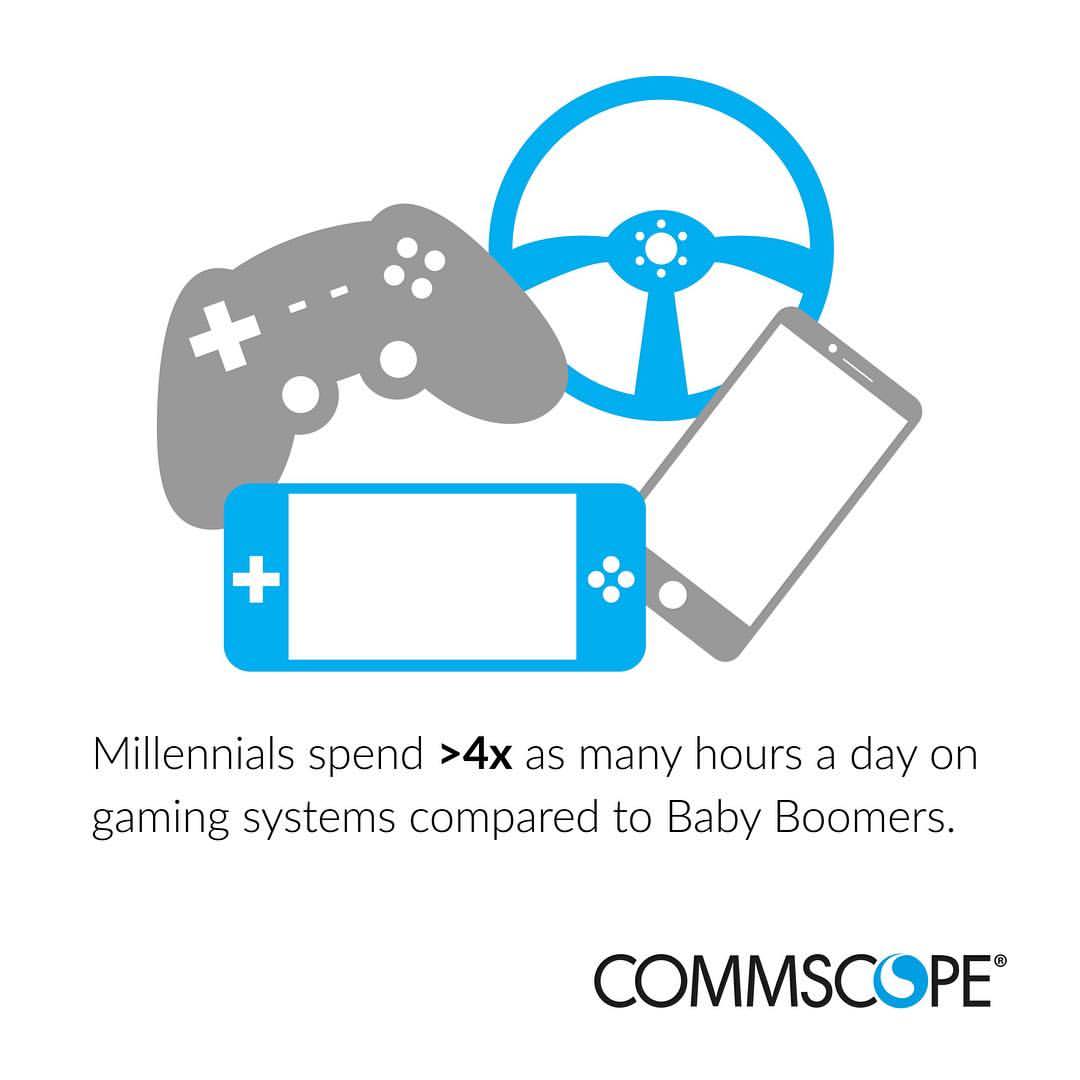Global network operators should plan for continued capacity growth, greater flexibility, a larger array of services and corresponding billing models to address societal changes brought on by the millennial generation, according to CommScope research. The millennial study findings also have implications for a range of constituents, including network architects, installers and operators, chief information officers, information technology leaders and real estate developers.
Slated to represent three of every four people in the global workforce by 2025, millennials have preferences and spending habits that directly impact telecommunications service providers and content providers. For example, more than 85% of millennials have smart phones, and more than three quarters (77%) of millennials agreed or strongly agreed that they expect to be able to stream video wherever they are. Millennials are willing to pay for higher levels of service; for example, half of millennials said they would pay 5% of their annual salary for super-fast internet. Other key findings of the report included:
- Millennials are so accustomed to the internet that they would rather give up plumbing, heating and air conditioning, personal transportation and cable TV before they would go without connectivity and the electricity needed to power their devices;
- Two-thirds of millennials agreed or strongly agreed that social media is their major form of social communication, compared with one-third of baby boomers;
- Three-quarters of millennials said they would like to adjust the speed of their internet services depending on their activities—and pay accordingly.
These findings and others point to several key imperatives for network service providers:
- Wireless service providers need to continue to build out and expand their networks, while enterprises, retailers, hotels, and other organisations would be wise to work with the providers to address their in-building wireless needs;
- Wireless networks must continue to increase in speed and capacity and need additional focus on response time (or latency). Advances and adoption of cloud RAN, virtualisation and eventually 5G technologies will likely assist in this mission;
- Fibre will be driven deeper toward the edge to satiate demands for higher bandwidth and improved latency;
- Software-defined networking (SDN) and network functions virtualisation (NFV) will improve efficiency, drive capacity where it is needed, when it is needed, and generally increase network agility.
“Millennials will represent the lion’s share of purchasing power in a few years, and since they prioritise devices and access to fast internet, they are expected to continue to put high levels of spend towards connectivity. However, they need to be served differently than previous generations in order to meet their expectations,” said Morgan Kurk, Chief Technology Officer, CommScope. “Our experience, innovative thinking, and broad portfolio of wireless and wireline networking solutions will continue to help service providers, data centre operators and businesses rise to the challenge of serving this new generation of consumers.”
The CommScope survey was conducted among 4,000 millennials and baby boomers in San Francisco, London, Sao Paolo, and Hong Kong in early 2016. The full report can be downloaded at CommScope.com/Millennials.


